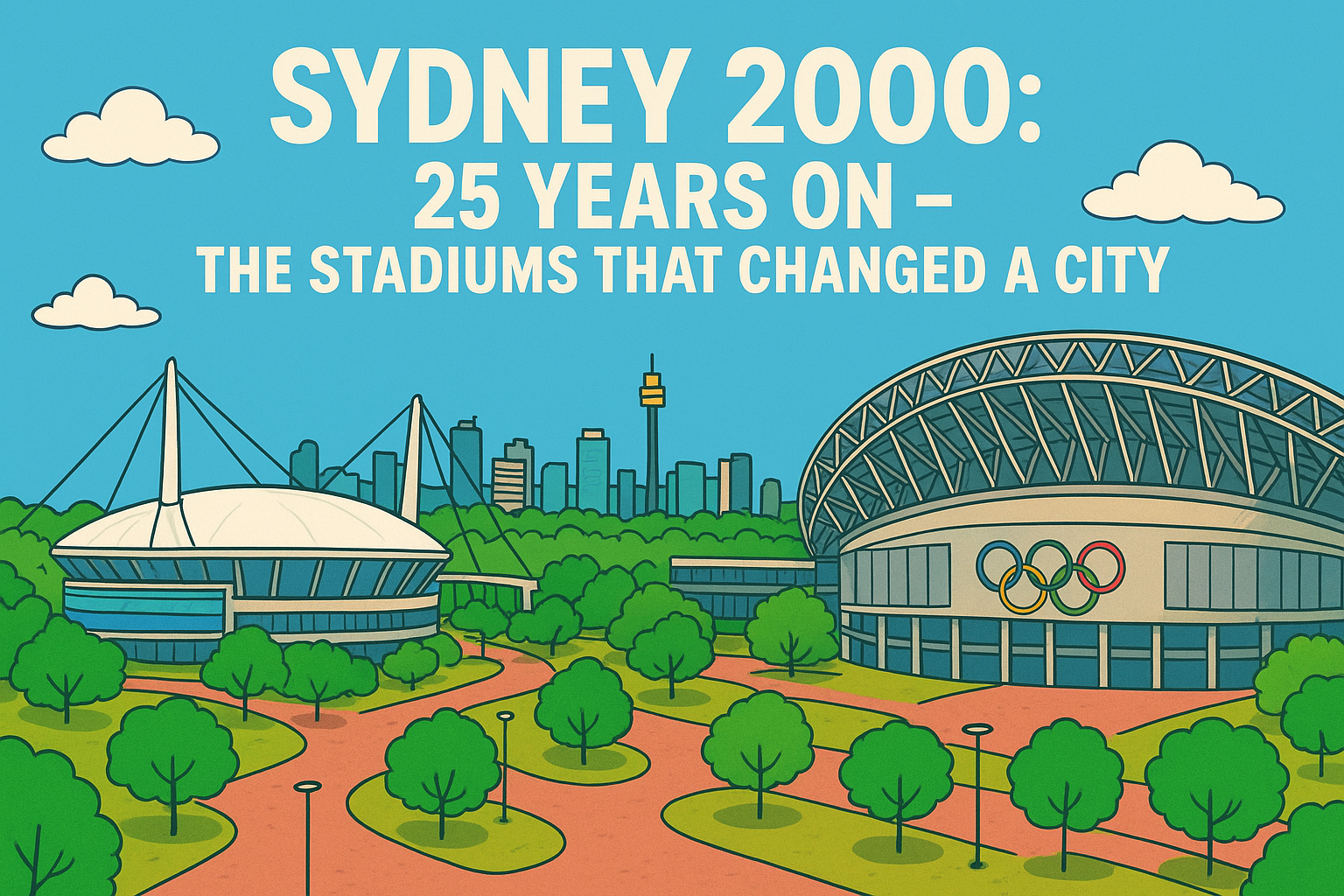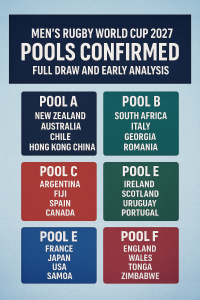Two and a half decades. It’s hard to believe that 25 years have passed since the Sydney 2000 Olympic Games, a sporting spectacle widely hailed as the “best ever.” The Games delivered a lasting infrastructure legacy that fundamentally reshaped Sydney’s landscape, transforming industrial zones into thriving sports and community precincts.
Today, on the 25th anniversary of those unforgettable moments, we look back at every arena, track, and waterway that hosted the world, exploring their “then” and “now” stories—proving that the Sydney legacy is one of the most successful in modern Olympic history.
The Heart of the Games: Sydney Olympic Park (SOP)
The central Olympic site—the former industrial heartland of Homebush Bay—was completely transformed, and its core facilities remain critical to Australian sport.
| Venue Name (2000) | Olympic Event (2000) | Capacity | Post-Olympic Use (2025) |
|---|---|---|---|
| Stadium Australia | Ceremonies, Athletics, Football Final | 115,600 | Accor Stadium. Reduced to ~83,500 capacity, it remains the premier venue for NRL Grand Finals, Rugby Tests, and major concerts. |
| Sydney SuperDome | Basketball Final, Gymnastics | 18,200 | Qudos Bank Arena. Sydney’s major indoor arena, hosting global music tours and large-scale indoor sports events. |
| Sydney International Aquatic Centre | Diving, Swimming, Water Polo Final | 10,000 | Thriving Community Hub. A busy public aquatic facility and high-performance training centre, one of the most successful Olympic legacies worldwide. |
| The Dome & Exhibition Complex | Basketball, Badminton, Volleyball, Handball, Modern Pentathlon (Fencing/Shooting) | 10,000+ | Sydney Showground. The complex is now a major convention, trade, and exhibition venue, hosting the annual Sydney Royal Easter Show. |
| Sydney Olympic Park Tennis Centre | Tennis | Main Court: 10,000 | Ken Rosewall Arena. Renovated with a new retractable roof, it hosts major ATP/WTA tennis tournaments and is used for various indoor sports. |
| Sydney Olympic Park Hockey Centre | Field Hockey | 15,000 | World-Class Hockey Facility. Continues to operate as a state-of-the-art training and competition venue for Australian hockey. |
| State Sports Centre | Table Tennis, Taekwondo | 5,000 | Continual Sports Use. Hosts national and state-level indoor sports tournaments, martial arts events, and community programs. |
| Sydney International Archery Park | Archery | 17,500 | Dedicated Archery Range. Still in operation, serving the archery community and hosting local and national competitions. |
| Sydney Baseball Stadium | Baseball Final, Modern Pentathlon (Riding/Running) | 14,000 | Sydney Showground Stadium (Engie Stadium). The venue was significantly redeveloped and expanded (2011–2012), removing the original baseball configuration and track to become the multi-purpose AFL and Cricket ground. |
The Water & Landscape Legacy
The Games utilized Sydney’s natural beauty, leading to the creation of permanent, specialized water and land facilities outside the main Park.
- Penrith Whitewater Stadium: The site of the Canoeing Slalom. Today, it is a fully operational adventure tourism and training centre, offering public rafting trips.
- Sydney International Regatta Centre: Hosted Rowing and Canoeing Sprint events. This venue remains the primary high-performance centre for Australian rowing and canoeing, set amidst expansive public parklands.
- Ryde Aquatic Leisure Centre: Hosted Water Polo. This venue was already planned but completed for the Games, and now operates as a popular public swimming and leisure centre.
- Sydney International Equestrian Centre: Built for the Equestrian events, it continues to be the largest and most important equestrian facility in New South Wales.
- Sydney International Shooting Centre: Built for the Shooting events, this facility remains a state-of-the-art shooting complex used for training and competitions.
- Dunc Gray Velodrome (Banskstown): The Track Cycling venue is still a dedicated, world-class indoor velodrome, preserving the cycling legacy.
- Western Sydney Parklands: Hosted Mountain Biking. This area has been preserved as public parkland, with the trails contributing to its vast recreational network.
CBD & Coastal Transformations
Some venues were temporary or adapted existing city buildings, showcasing the urban appeal of the Games.
- Sydney Convention & Exhibition Centre (Darling Harbour): Hosted Boxing, Fencing, Judo, Weightlifting, and Wrestling. The original complex was redeveloped, replaced by the modern ICC Sydney, completing one of the city’s largest urban renewals.
- Sydney Entertainment Centre (CBD): Hosted Volleyball. This venue was later demolished and redeveloped as part of the Darling Harbour revitalisation.
- Sydney Football Stadium (Moore Park): Hosted the Football (Women’s Final). The original stadium was demolished and replaced by the magnificent new Allianz Stadium in 2022, continuing its role as a key football and rugby ground.
- Blacktown Olympic Park: Hosted Baseball and Softball. This site remains a critical regional sports hub for Western Sydney, fostering grassroots and high-level competition.
- Bondi Beach: The stunning temporary arena for Beach Volleyball was dismantled, and the world-famous sand was returned to its natural state, leaving only iconic memories.
- Sydney Opera House, Centennial Parklands, Marathon Course, North Sydney: These iconic public spaces—used for the dramatic Triathlon, Road Cycling, and Marathon start/finish lines—returned to their normal use, but now carry the unforgettable historical marker of their Olympic routes.
- Cruising Yacht Club of Australia: Used for Sailing, the club continues its distinguished maritime history, hosting the Sydney to Hobart Yacht Race every year.
A National Reach: Co-Host Football Stadiums
Preliminary Football matches reached beyond Sydney, utilizing existing major stadiums in other capital cities, leaving a positive national imprint.
- The Gabba (Brisbane): Continues as the home of Queensland Cricket and the Brisbane Lions AFL team, set for a major future revamp.
- Bruce Stadium (Canberra): Now known as GIO Stadium, it remains the premier venue for Rugby League and Rugby Union in the nation’s capital.
- Hindmarsh Stadium (Adelaide): Still a vital soccer-specific stadium, home to Adelaide United.
- Melbourne Cricket Ground (Melbourne): The undisputed king of Australian sport, the MCG continues to host massive AFL and Boxing Day Test matches.
The Enduring Gold Medal Legacy
Twenty-five years later, the venues of the Sydney 2000 Olympics stand as a testament to planning and foresight. They are not merely monuments to a past event, but active, thriving elements of Australia’s sporting and cultural infrastructure, proving that the vision to build a lasting legacy was indeed the greatest win of the Games.
Looking at the entire portfolio, which venue, whether temporary or permanent, do you think delivered the greatest long-term benefit to the city of Sydney? Share your thoughts below!
Last Updated on October 1, 2025 by Sports Tourist




